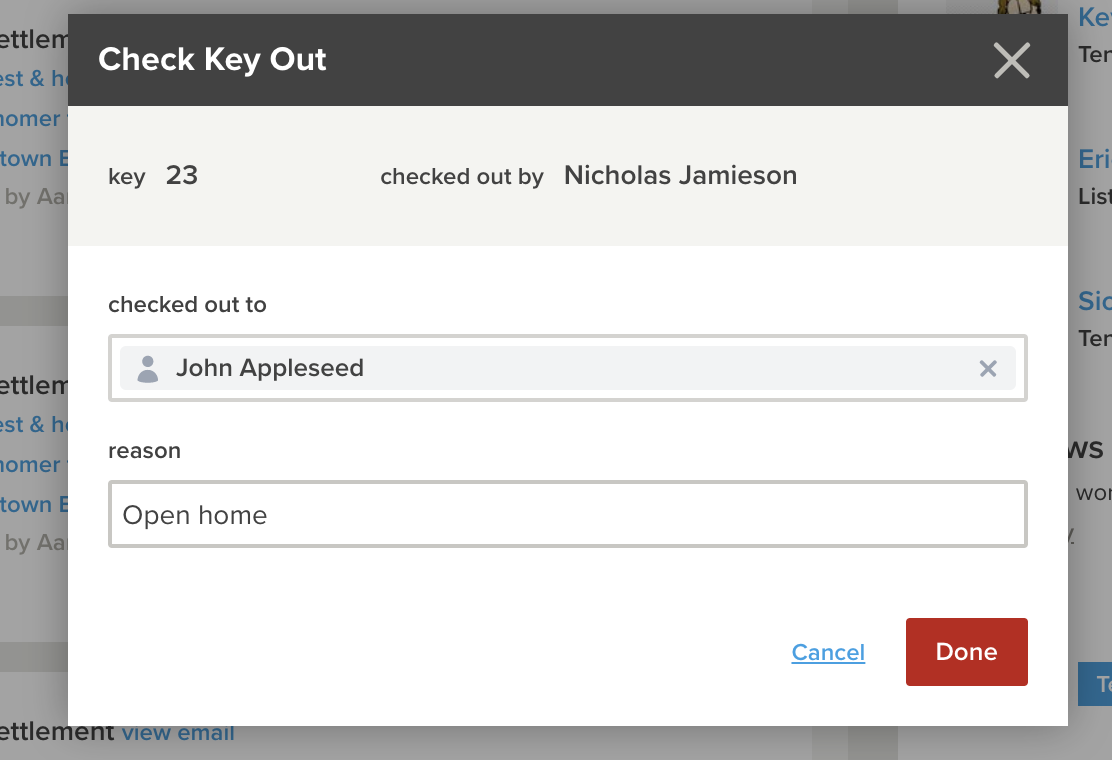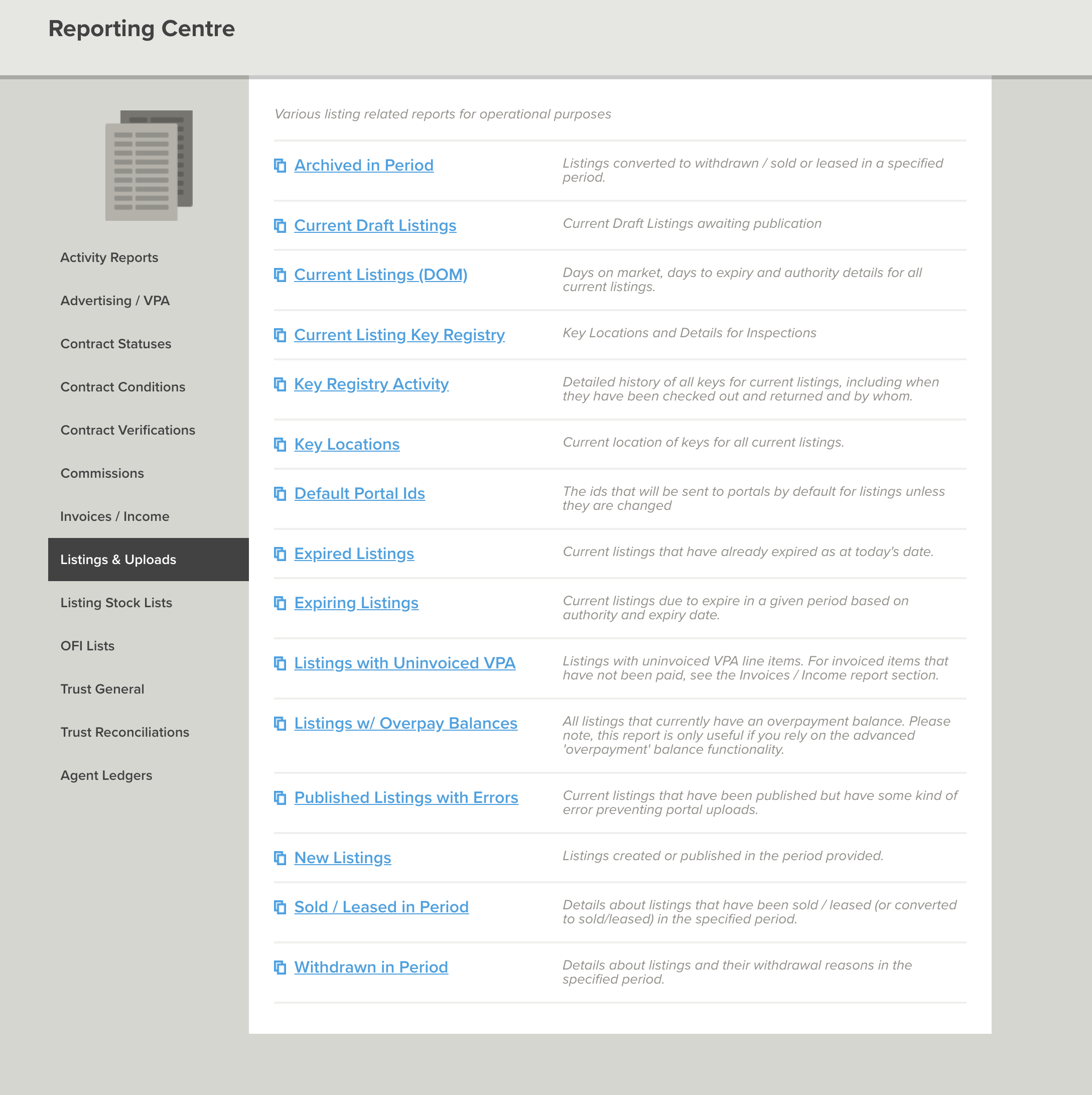
Feature release: simplify your key management with the new key registry


Keeping track of who’s got which key isn’t the easiest of tasks. Until now, Rex’s key registry has been limited to a small section on a property record that holds key and entry information, in the Office Use Only section. This creates an obvious problem: what if a set goes missing? To make up for this, we’ve heard some offices have been using the old school pen-and-paper method to manage their keys. However, physical registries are tedious, which means they’re not always used as they should be. You also can’t access them on the run - which is exactly when you want to know where the keys for your next inspection are. With this feature update, we’ve introduced extra functionality (like tracking who a particular set of keys are currently with) to make the task simple. You can now:
- add multiple keys to a listing and give them each a label within Rex (eg. the number on the physical key)
- check where a key is stored in, whether that’s your office, onsite in a lockbox, or anywhere else in the world
- search listings by key labels in global search
- mark a key as checked in or checked out (that means no more paper logs!)
Now, there’s no need to stress when you see an empty hook on your key board. You can check your list of key locations to pinpoint exactly where your key last was.
It’s as easy as 1 - 2 - key 3
Under the Key Details tab, the Office Use Only section has been replaced with a new Property Access section. Everything works exactly the same way. Underneath this lives the new Keys section, which has replaced the old Key Location and Key Number fields. Any data previously stored in these fields has been moved over for you. Here’s how you can find (and start using!) the improved key registry:
To add a key
Navigate to your listing record, then to Keys (at the bottom of the page). Click + to add a new key.Give the key a label (for example, the number on the physical key tag), a description (side gate, for example) and select the key’s current location from the dropdown menu. We’ll go into how to customise your location options in just a minute. Then, add in any other information such as the alarm code or any other notes.
To check-in / out
Type the name of the person checking the key out and for what reason, then click Done.

To add a new location
Go to Settings>Advanced Settings>Key Locations. Click + to add location options for your keys. You can also hide options. If, for example, you’re no longer storing keys in a lockbox you would select hide from the dropdown menu.
To create a report for your current keys
Navigate to Admin>Reporting>Listing Uploads, then choose from either:
- Key Registry Activity
This report provides a detailed history of all keys for your current listings, including when they’ve been checked out, returned and who by; or
- Key Locations
This report lists the location of keys for all your current listings.

You can then generate either a PDF, HTML or CSV Export to download to your computer. If you want to print it out, we recommend saving as a PDF.
No need to dust off the archives
When you mark a listing as sold, you can now archive any of its keys. To do this, select Archive from the key’s dropdown menu. This is perfect for when you’re no longer managing a key but want to keep its history. All your key inventory is never more than a few clicks away. If need be, you can also delete a key completely from this dropdown menu.
Everything you need on the fly
Where are you when you need keys? Chances are, you’re on the go. That’s why everything (apart from the reports) is available on Pocket, too! You’ll notice a new key icon at the top of your listing record in Pocket. When you use Rex to store information at particular listing’s keys, the icon will be highlighted blue. As for the details (like who’s checked them in or out), you’ll find them under the new Keys section of your listing. To add a key, either tap + or Add Key. Give it a label, description and select the location. Tap Save and you’re good to go! Now, you can check keys in and out. To edit the key’s information, tap the pen icon in the top right corner of the screen. To archive, tap the three dots. It’s all pretty self-explanatory. So, it’s goodbye to the old-school pen and paper and hello to improved security for your agency. Rex keeps all your data under lock and key (see what we did there?). If you run into any problems with this new feature, get in contact with support at support@rexsoftware.com.au, as always. If you’ve got a feature suggestion, head to UserVoice. We’d love to hear your thoughts!
